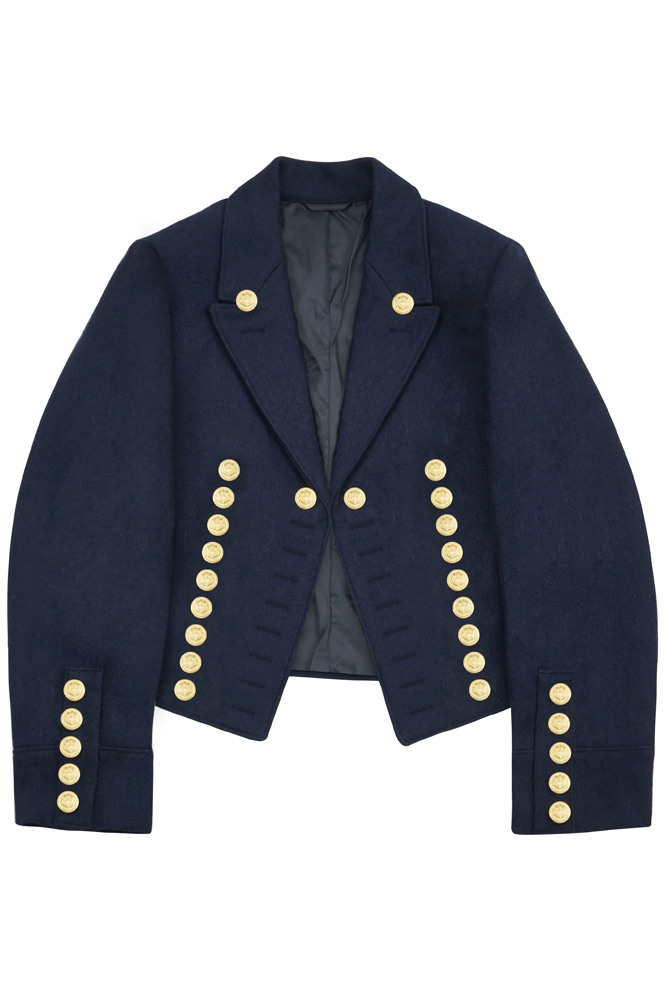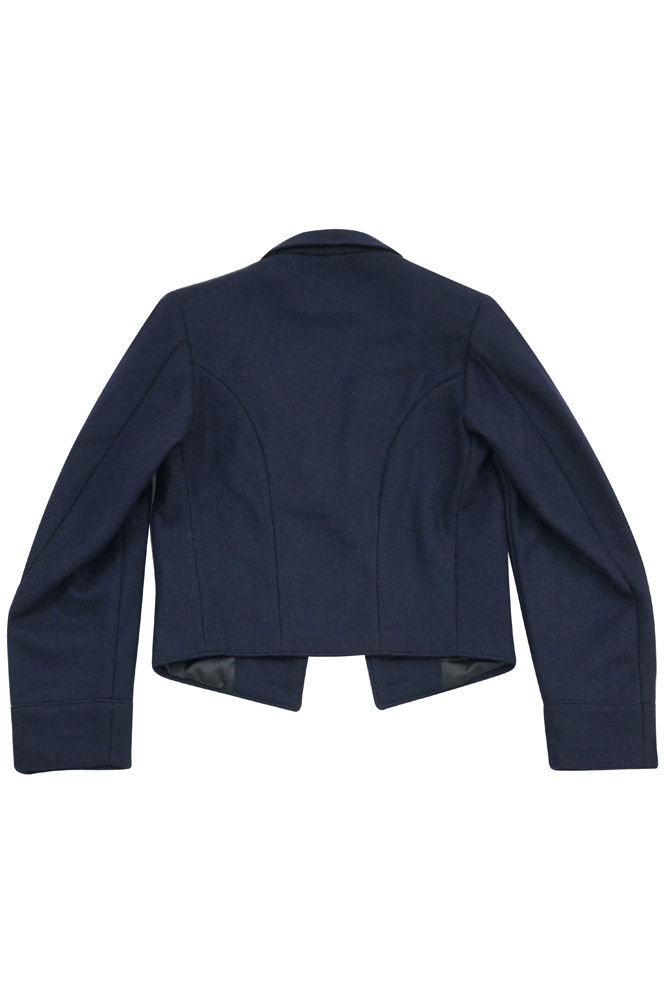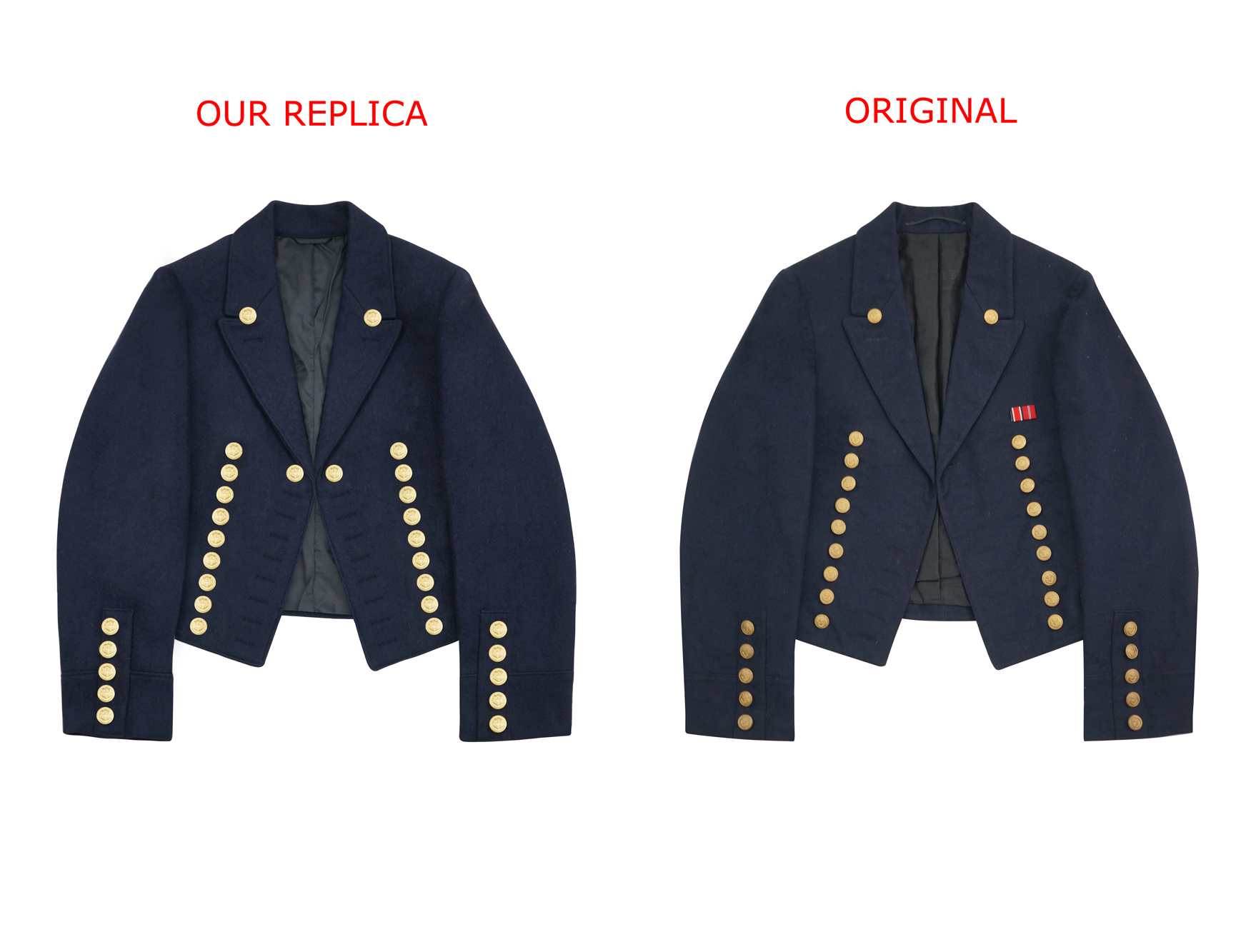| ||||||
Parade Jacket: The jacket was worn by junior NCOs and privates with the parade dress and with the walking-out dress (but omitted during the summer), and with the service dress if so ordered. Blue Shirt collars were turned outside. By order (NTB 39, NO.204 I) dated 6 September 1939 further wear of parade jackets was prohibited “for the duration of the war”, except on orders. The jacket was made of navy blue cloth. It was constructed of two front panels with lapels, two side panels and a back panel, all connected by shoulder, side and seams. The horizontal edge of the back reached slightly below the waistline. The front edges diverged slightly from the base of the lapels down-wards, and the lower front rim slanted a little forward thus forming a slight point at the front comers. Collar and lapels had an interior stiffening lining. The upper edge of the lapels was horizontal, and the lapels extended approximately to the center of the breast. A buttonhole was set at the base of the lapels near either front edge. Two gold anchor buttons (connected by a chain of ten links) were buttoned to these. Eight “blind” buttonholes were evenly distributed between the buttonholes of the chain and to a point 3cm above the lower rim of the jacket. On each front panel was an angled vertical row of nine buttons positioned in line with the buttonholes, and with the uppermost button spaced 12cm apart from the front edge, and the lowest 9cm. a blind buttonhole was set on either lapel parallel to its upper edge. Their corresponding buttons were sewn on under and hidden by the collar. The sleeves consisted of two panels with front and buck seams, and with “Brandenburg” cuffs. These were a 8cm wide cuff (with seam at the back) and a patch of basic cloth measuring 16x4cm sewn on a t a distance of 5cm outward from the front sleeve seam. Five blind buttonholes were evenly distributed on the vertical center line of the patches, and each buttonhole had a button sewn on its outer end.
<uniform & traditions of the Kriegsmarine by John R. Angolia & Adolf Schlicht> |
WWII German Kriegsmarine Navy Blue Wool Parade Dress Tunic
Item news update: 2022. Jun. 7 - WWII German Kriegsmarine Navy Blue Wool Parade Dress Tunic












Leave A Comment